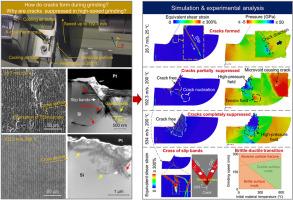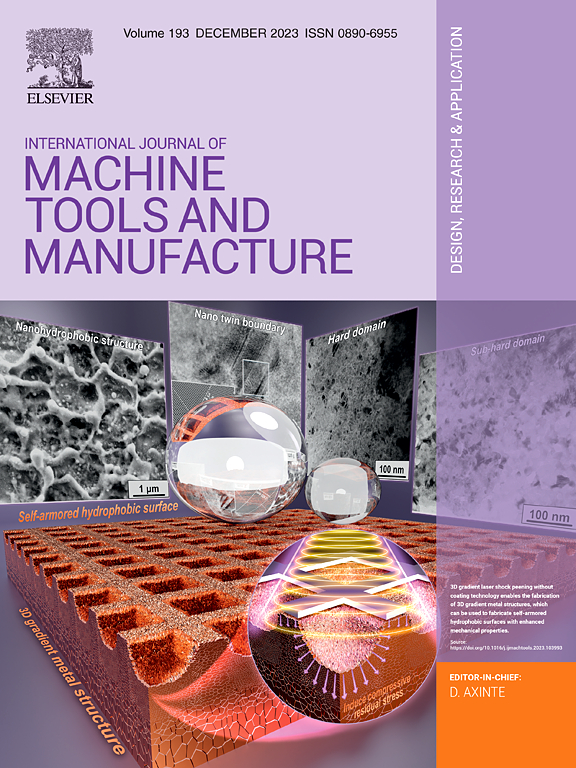Towards understanding the crack suppression mechanism in brittle materials with high grinding speed at different temperatures
Abstract
Ductile-regime grinding has been used to eliminate the formation of subsurface cracks by setting an extremely small depth of cut (DOC). The critical DOC is affected by multiple factors, including the grinding speed and material temperature. The underlying mechanism of DOC affected by the grinding speed is still unclear. To reveal the role of grinding speed and material temperature during the formation of cracks, we conducted a series of single-point grinding experiments with the different grinding speeds (26.7–192.3 m/s) and the initial material temperatures (25–200 ). The experimental results showed that cracks were suppressed with an increase in the grinding speed and initial material temperature even when the DOC was much deeper than the critical DOC determined by the ductile-regime grinding. To understand the mechanisms underlying crack nucleation and suppression, we conducted systematic molecular dynamics simulations. Both simulation and experimental results showed that a crack can be formed by a single slip band. The crack nucleates from a microvoid within the slip band. With the aid of the local tensile stress on one side of the slip band tip, the crack nucleation forms an opening crack. The crack suppression is primarily caused by the high‐pressure field during high‐speed grinding, where the high‐pressure field superposes the local tensile stress to forming a compressive stress state that prevents crack nucleation. In addition, the brittle‐ductile transition is induced by the high temperature on the surface during high‐speed grinding. This study provides insights into building the DOC criterion for different grinding speeds and temperatures based on a ‘bottom-up’ approach.



 求助内容:
求助内容: 应助结果提醒方式:
应助结果提醒方式:


